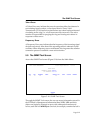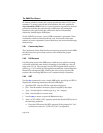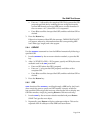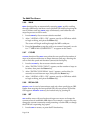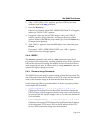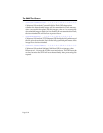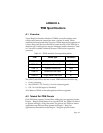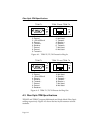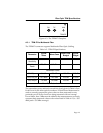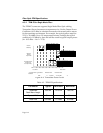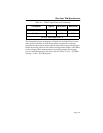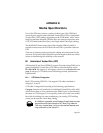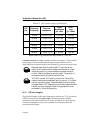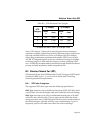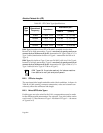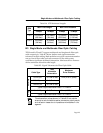
Page B-1
APPENDIX B
Media Specifications
Use of the STHI may involve a variety of cable types. The STHI hub’s
network ports support either Shielded Twisted Pair (STP) or Unshielded
Twisted Pair (UTP) cabling, depending on the STHI model, while Token
Ring Port Interface Modules (TPIMs) allow for network expansions onto
UTP, STP, Multimode Fiber Optic, and Single Mode Fiber Optic cabling.
The HubSTACK Interconnect cable (Part Number 9380141) which is
needed to interconnect an STH hub with an STHI is provided with each
STH.
Take care in planning and preparing the cabling and connections for the
network. The quality of the connections and the length of cables are critical
factors in determining the reliability of the network.
B.1 Unshielded Twisted Pair (UTP)
STHI models 22 and 24 and TPIM-T2 support D-inside wiring (DIW) voice
grade Unshielded Twisted Pair (UTP) cable as described below and in
EIA SP-1907B. All category 5, all category 4, and some (see Section 2.3.2 on
page 5) category 3 UTP cables meet Token Ring network performance
requirements.
B.1.1 UTP Cable Categories
Both UTP modules (STHI-22 / 24) support UTP cables classified as
category 3, 4, and 5.
UTP cable is categorized according to the following specifications:
Category 3 consists of (usually) four Unshielded Twisted Pairs of 24 AWG
solid wire for data or voice communication. (IBM Type 3 is coincidentally
the same as UTP Category 3.) It is typically used to wire cable runs within
the walls of buildings. In some installations, pre-existing UTP building
wiring can be used for Token Ring cabling.
At 16 Mbps ring speeds, some Category 3 cable does not meet
the performance requirements of a Token Ring network.
This may impose lower limits on lobe cable distances and
ring node counts. See Table B-1.
WARNING



